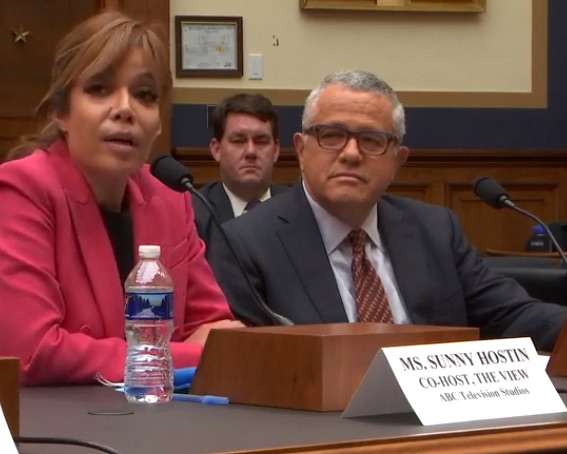Congress Looks at Cameras in Court

House members waded into the thorny issue of cameras in the court Thursday (Sept. 26) and the political divide over the issue was on display from the outset.
That came in a hearing, "The Federal Judiciary in the 21st Century: Ensuring the Public’s Right of Access to the Courts," in the House Judiciary Subcommittee on Courts, Intellectual Property and the Internet.
The chairman of the committee, Rep. Hank Johnson (D-Ga.), said that whether the federal courts are truly open is not answered by whether the physical doors are open. "We need only look to state judiciaries to see what open justice means today," he said. "Nearly every state court system allows cameras in their hearing rooms and many of them have live-streamed their proceedings for years."
For her part, ranking member Martha Roby (R-Ala.) rendered quite a different verdict on cameras. "I'm opposed to placing cameras in courtrooms," she said. "Having live broadcasts of these proceedings can place witnesses in jeopardy, cause disruption and cast doubt on the outcome of a case." She has similar issues with same-day audio.
Witness and U.S. District Judge Audrey Flessig, speaking for the Judicial Conference, said the federal judiciary shares Congress' commitment to public access to the courts, but must balance that with the rights of the litigants.
Flessig said that today the public can easily access oral argument from appeals courts for free, and in some cases in real time, and that some courts also allow video. She suggested that was the right balance.
Rep. Johnson asked why the Judicial Conference continued to impose strict limits on courts, even though both of the conference's pilot projects on cameras were reviewed favorably by the judges who participated.
The smarter way to stay on top of broadcasting and cable industry. Sign up below
Flessig said the results of the conference's two, multi-year studies, on cameras in the courtroom have instead been mixed. Some judges had favorable experiences, others not. She said in balancing all the info, the detriment to allowing cameras in the courtroom outweighed the benefits, separate and apart from the cost. She went even farther, saying on balance cameras can be "very destructive" to the integrity of the process.
Gabe Roth, executive director of Fix the Court, said of Flessig's testimony in an e-mail to Multichannel News that the studies were designed to fail, including that "the camera angles - often askew or from above - did not comport with the type of user experience meant to inform, and the video quality was worse than poor. "
Flessig's court participated in the most recent test, and she said lawyers also expressed concern about the impact of cameras.
Johnson asked what led to that conclusion. Flessig said there were several things, including that in the case of trial courts, they are already stressful situations often discussing confidential and even embarrassing matters. She said that the state courts are also mixed on whether to televise proceedings.
Rep. Andy Biggs (R-Ariz.), a former judge, said he also had issues with cameras in trial courts.

Witness and CNN legal analyst Jeffrey Toobin saw it in pretty black and white terms, or more appropriately, full color and preferably high-definition (or surroundsound), according to his written testimony. "The Sixth Amendment mandates 'public' trials. In the 21st Century, the only meaningful definition of ‘public’ is one with audio and video access," he wrote.
"I’ve been with many people who are attending their first Supreme Court argument," said Toobin, who has written a couple of books about the court, "and they almost all say the same thing. 'Wow, the Justices are impressive. They know their stuff. They are well-prepared and working hard.' I suspect, if there were cameras in the courtroom, the broader public would say the same thing, and I look forward to that day."
Also testifying was View co-host and former prosecutor Sunny Hostin, who said "there exists no better cure for fundamental mistrust and perceived illegitimacy of the judicial system [particularly among African Americans who are more likely to be in that court system, and who overindex for video consumption across multiple platforms] than transparency of the courts that define it," she said, including the Supreme Court. "Public access to a judicial proceeding must not be limited to seeing a report on television, often times distilled by a journalist without a legal background," she said in her testimony.
Asked by Biggs about cameras in appeals courts, Flessig said she didn't think much would be gained by watching someone at a lecturn, and that audio alone was arguably more effective. "I realize we live in a TV age, but I am not sure how much more is gained."
Contributing editor John Eggerton has been an editor and/or writer on media regulation, legislation and policy for over four decades, including covering the FCC, FTC, Congress, the major media trade associations, and the federal courts. In addition to Multichannel News and Broadcasting + Cable, his work has appeared in Radio World, TV Technology, TV Fax, This Week in Consumer Electronics, Variety and the Encyclopedia Britannica.

